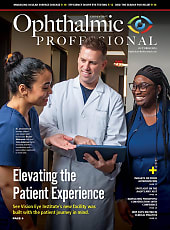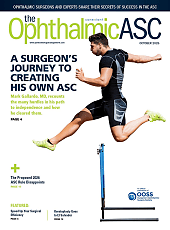The following transcript has been edited for clarity:
Hello, I'm Timothy G. Murray, MD, MBA, FACS, from the Miami Ocular Oncology and Retina Institute in Miami, Florida. It’s my pleasure to give you an update on our presentation at the American Academy of Ophthalmology on melanoma-associated retinopathy.
In this series, we looked at tumors that were treated avoiding radiation therapy, so in this case it’s not radiation-associated retinopathy, it is tumor-associated retinopathy. To do this we evaluated 105 patients with small uveal melanoma that were treated with an ablation therapy. All patients had gene expression profiling, and all patients were followed for a minimum of 5 years, with an average follow-up of around 79 months. Patients had visual acuity and tumor assessment. For that 105 patients, the entry-level vision was 20/63, the average apical thickness of the tumor was 1.9 mm, and we saw—when we followed these patients after treatment—that we had tumor control in all the patients that we included in the study.
So the patient vision started at 20/63. We saw tumor-associated maculopathy—remember, no radiation for these patients—on average recurring at about 4 months. In the Collaborative Ocular Melanoma Study (COMS), you saw tumor-associated radiation retinopathy in a low incidence by 1 year, and by 3 years those patients had an average visual function of 20/200, so they slowly lost vision. In this series, where we measured with spectral-domain ocular coherence tomography (SD OCT) and we used intravitreal bevacizumab, the vision at entry was 20/63. It improved to 20/40 in the first year. It improved to 20/30 at the third year—that’s 20/30, not 20/300, so there was a huge improvement—and it ended at the study end at 20/32. In this group, patients were injected with bevacizumab about 6 times per year. We start off about every 6 weeks, we use a treat-and-adjust so they can get interval shortened or interval lengthened based on the OCT study, and only 1 of our patients with a gene expression profiling (GEP) class 2 [tumor] developed metastatic disease and died.
All the patients had excellent local tumor control and on average 85% of the patients are better than 20/40. That's reading/driving vision in the state of Florida, so those patients have done well. They've avoided radiation, they have tumor control, and the maculopathy they develop is not radiation maculopathy, it is tumor maculopathy and it is responsive to anti-VEGF therapy and can be evaluated with SD-OCT.
Thank you so much for joining us to talk about tumor-associated maculopathy. RP








